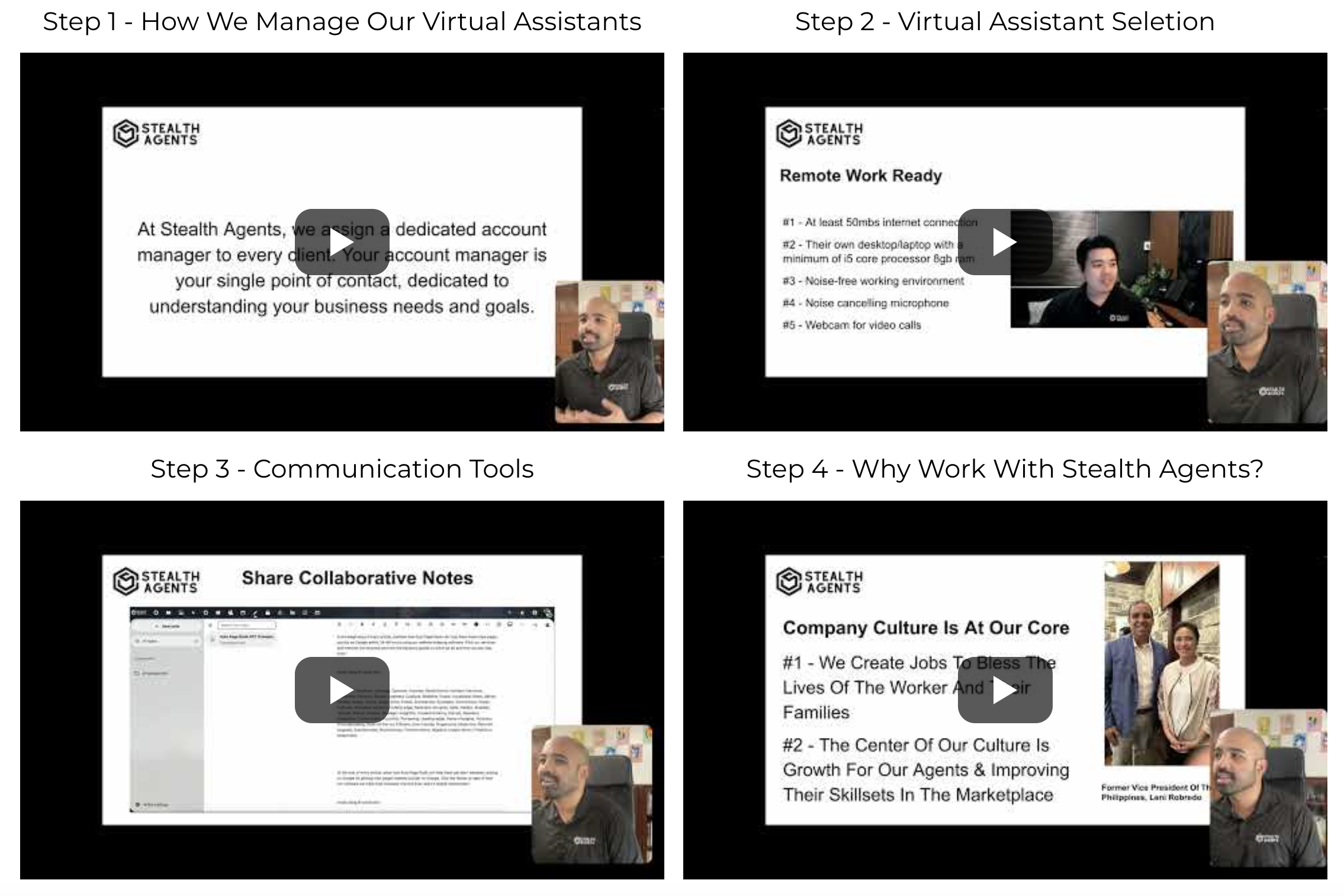Proper collaboration tools are essential for any team looking to maximize productivity and streamline communication.
Slack vs Samepage are popular platforms catering to these needs, each offering distinct features tailored to different work environments.
Slack is renowned for its robust messaging capabilities, enabling real-time communication through channels and direct messages, which is ideal for teams that prioritize quick and efficient exchanges.
On the other hand, Samepage stands out with its comprehensive project management features, integrating communication with task management, file sharing, and collaborative document editing, making it an excellent choice for teams that require a more all-in-one solution.
While Slack excels in third-party integrations, allowing users to connect a wide array of apps, Samepage can keep everything within a single interface, reducing the need to switch between tools.
Choosing between Slack vs Samepage ultimately depends on whether your team values instant communication or integrated project management efficiency.
This resource has been meticulously created and curated by Stealth Agents, experts who identify and analyze the best tools for enhancing team collaboration.
Their dedication ensures you receive insightful and thorough comparisons to make informed decisions.
What is Slack?
Slack is a powerful team communication platform designed to unite people in an organized, efficient manner.
It facilitates real-time messaging, allowing users to create dedicated channels for various topics and projects, which helps streamline discussions and maintain team focus.
Integrating with various third-party applications, Slack enhances productivity by enabling seamless workflows and easy access to virtual assistant tools.
Its robust search functionality allows users to quickly locate past messages and files, ensuring that important information is never lost.
Furthermore, Slack supports desktop and mobile platforms, providing flexibility and accessibility for teams working remotely or on the go.
Key Features:
- Channels: Dedicated spaces for organizing conversations by topic or project help teams maintain focused discussions without clutter.
- Direct Messaging: Enables private conversations between team members, making coordinating tasks or sharing sensitive information easy.
- App Integrations: It supports integration with a plethora of third-party applications, such as Google Drive, Trello, and Zoom, which enhances productivity by streamlining workflows.
- Search Functionality: Powerful search capabilities allow users to quickly find past messages, files, and conversations, ensuring that nothing gets lost.
- Customizable Notifications: Users can tailor notifications to their preferences, ensuring they only receive alerts for the most relevant information.
Pros:
- User-Friendly Interface: Slack’s design is intuitive and easy to navigate, making it accessible to users of all technical abilities and fostering quick adoption.
- Integration Capabilities: The ability to connect with numerous apps means that teams can manage most of their tasks directly within Slack, minimizing the need to switch between different platforms.
- Enhanced Collaboration: Channels and direct messaging allow for structured communication, which helps teams collaborate efficiently and effectively.
- Cross-Platform Accessibility: Slack is available on desktop and mobile devices and ensures that team members can keep in touch wherever you are at all times.
- Search and Retrieval: The advanced search feature lets users quickly retrieve past discussions and documents, saving time and increase productivity.
Cons:
- Information Overload: With multiple channels and notifications, users can quickly become overwhelmed with information, potentially decreasing productivity.
- Cost for Premium Features: While the basic version is free, many of Slack’s more advanced features require a paid subscription, which may not be feasible for smaller teams or startups.
- Learning Curve for New Users: Despite its user-friendly design, new users may still need more time to fully understand and leverage Slack’s features effectively.
- Dependence on Internet Connectivity: Slack requires a stable internet connection as a cloud-based tool, which can be a limitation in areas with poor connectivity.
- Security Concerns: Although Slack offers security measures, there is always a risk associated with storing sensitive information on a cloud platform, which may concern specific organizations.
What is Samepage?
Samepage is an integrated collaboration tool to streamline team communication and project management.
It combines messaging, top task management tools, file sharing, and collaborative document editing into an intuitive platform.
This all-in-one approach allows teams to manage projects efficiently without switching between multiple applications.
Users can create pages to organize tasks, share files, and communicate directly, making it ideal for teams that value cohesion and simplicity.
Additionally, Samepage supports real-time collaboration, ensuring all team members are aligned and can contribute effectively regardless of location.
Key Features:
- Collaborative Pages: Create and manage pages where teams can organize projects, share files, and communicate, keeping everything in one place.
- Task Management: Integrated task management features help track progress and assign responsibilities, ensuring all team members know their duties.
- Real-Time Editing: Allows multiple users to edit documents simultaneously, facilitating seamless collaboration and immediate updates.
- File Sharing and Storage: Provides ample storage and straightforward file-sharing options, making managing and distributing documents easy.
- Video Conferencing: Built-in video conferencing capabilities enable virtual meetings, allowing for face-to-face discussions and enhanced communication.
Pros:
- All-in-One Platform: Samepage’s ability to integrate multiple tools into one interface reduces the need to juggle various applications, boosting productivity.
- User-Friendly Design: The intuitive layout makes navigating and utilizing all features easy, minimizing the learning curve.
- Efficient Communication: Using messaging, file sharing, and task management, Samepage fosters a streamlined communication process that keeps teams aligned.
- Cost-Effective Solution: This solution offers a range of features at a competitive price, making it accessible for small—to medium-sized businesses.
- Mobile Access: This feature is available on mobile devices, ensuring team members can collaborate and stay updated while on the move.
Cons:
- Limited Third-Party Integrations: Compared to other platforms, Samepage has fewer integrations, which may limit its functionality for teams reliant on specific external apps.
- Performance Issues: Some users report occasional lag or slow performance, particularly when handling large files or peak usage times.
- Customization Constraints: While easy to use, the platform offers limited customization options, which might not meet the needs of highly specialized workflows.
- Scalability Concerns: As teams grow, Samepage may need help to support larger organizations requiring more robust features and scalability.
- Security Limitations: While Samepage takes measures to protect data, data security in business may need more offerings for susceptible information.
Slack vs Samepage: Detailed Features Comparison
1. Communication Structure
In the realm of Slack vs Samepage, Slack is designed to streamline communication through its channel-based architecture, which allows teams to organize conversations by topics or projects.
This setup facilitates focused discussions and helps prevent essential messages from getting lost in the shuffle.
Samepage, however, integrates communication within its collaborative pages, allowing teams to discuss tasks directly where the work happens.
This means that conversations are contextually relevant and tied to specific projects, reducing the need to switch context.
While Slack excels in providing a structured communication environment, Samepage’s chat integration within project management can enhance clarity and focus.
2. Collaboration Tools
When considering Slack vs Samepage in terms of collaboration, Slack supports team interaction through channels and direct messages, complemented by app integrations that add functionality.
On the other hand, Samepage offers a holistic approach by combining document collaboration, task management, and communication on a single platform.
This integration makes it easier for teams to work collaboratively without juggling multiple applications.
Slack’s strength lies in its ability to integrate with various tools to enhance collaboration, whereas Samepage provides an all-in-one solution that simplifies project management and communication.
3. Integration Ecosystem
Slack is known for its extensive integration capabilities; with over 2,000 apps available to connect, teams can create a customized workflow that suits their needs.
This flexibility is critical in Slack vs Samepage discussions, as it enables Slack users to link virtually any tool they use, from Google Workspace to Trello.
In contrast, Samepage focuses on integrating essential functions directly into its platform, which means fewer third-party integrations but a more cohesive user experience.
While Slack offers more versatility regarding external app connectivity, Samepage’s built-in tools provide a seamless experience without needing additional applications.
4. User Interface and Experience
The comparison between Slack vs Samepage in user experience highlights Slack’s clean and intuitive interface, which organizes communication into channels for easy navigation.
This design appeals to users who prefer a straightforward approach to message management.
Samepage offers a more integrated interface where communication, task management, and file sharing coexist within the same environment.
This can enhance productivity by reducing the time spent switching between different tools.
While Slack’s interface is user-friendly and focused on communication, Samepage provides a unified workspace that caters to comprehensive project management.
5. Accessibility and Mobility
In terms of accessibility, both Slack vs Samepage offer mobile and desktop applications, guaranteeing that group members may maintain communication despite their location.
Slack’s mobile app retains most of its functionality, allowing users to manage channels and messages on the go, a critical feature in Slack vs Samepage evaluations.
Samepage’s mobile offering supports viewing and editing collaborative pages, ensuring users can contribute to projects from anywhere.
While both platforms prioritize accessibility, Slack’s mobile app is geared towards communication, whereas Samepage’s app supports communication and project management functionalities.
How do Stealth Agents Choose Slack vs Samepage?
When choosing between Slack vs Samepage, Stealth Agents employ a meticulous evaluation process that considers several critical factors to ensure the best fit for organizational needs.
The decision begins with assessing the team size and communication style; Slack’s channel-based setup is ideal for larger teams needing structured communication, while Samepage’s integrated approach suits smaller teams focused on cohesive project management.
Project requirements also play a pivotal role; if a team requires extensive document collaboration and task management within a single platform, Samepage might be favored.
On the other hand, Slack is preferred for teams relying heavily on third-party integrations to streamline workflows.
Integration needs are carefully analyzed, with Slack offering a vast ecosystem for app connectivity, whereas Samepage offers simplicity with its built-in functions.
User experience and interface design are considered, with Slack providing a user-friendly channel-based layout and Samepage offering a unified workspace that promotes productivity.
Cost-effectiveness is another crucial criterion, as Stealth Agents weigh the pricing models of each platform against the features offered, ensuring budget alignment without compromising functionality.
Stealth Agents leverage their expertise to ensure that the chosen platform aligns with the organization’s unique operational demands and strategic objectives.
If you are also looking for a virtual assistant Stealth Agents stands ready to assist. Book a free discussion to tailor preferences and explore virtual assistant pricing options.
Conclusion
When comparing Slack vs Samepage, it’s clear that each platform has strengths catering to different team needs.
Slack’s channel-based system provides a structured communication environment, making it ideal for larger teams that require organized and efficient messaging.
On the contrary, Samepage offers a more integrated approach, combining communication, task management, and document collaboration, which is perfect for smaller teams focused on seamless project management.
Choosing between Slack vs Samepage depends on factors like team size, project requirements, and the need for app integrations.
The right tool is crucial for boosting team productivity and communication, ensuring the platform aligns well with an organization’s specific goals and workflows.












